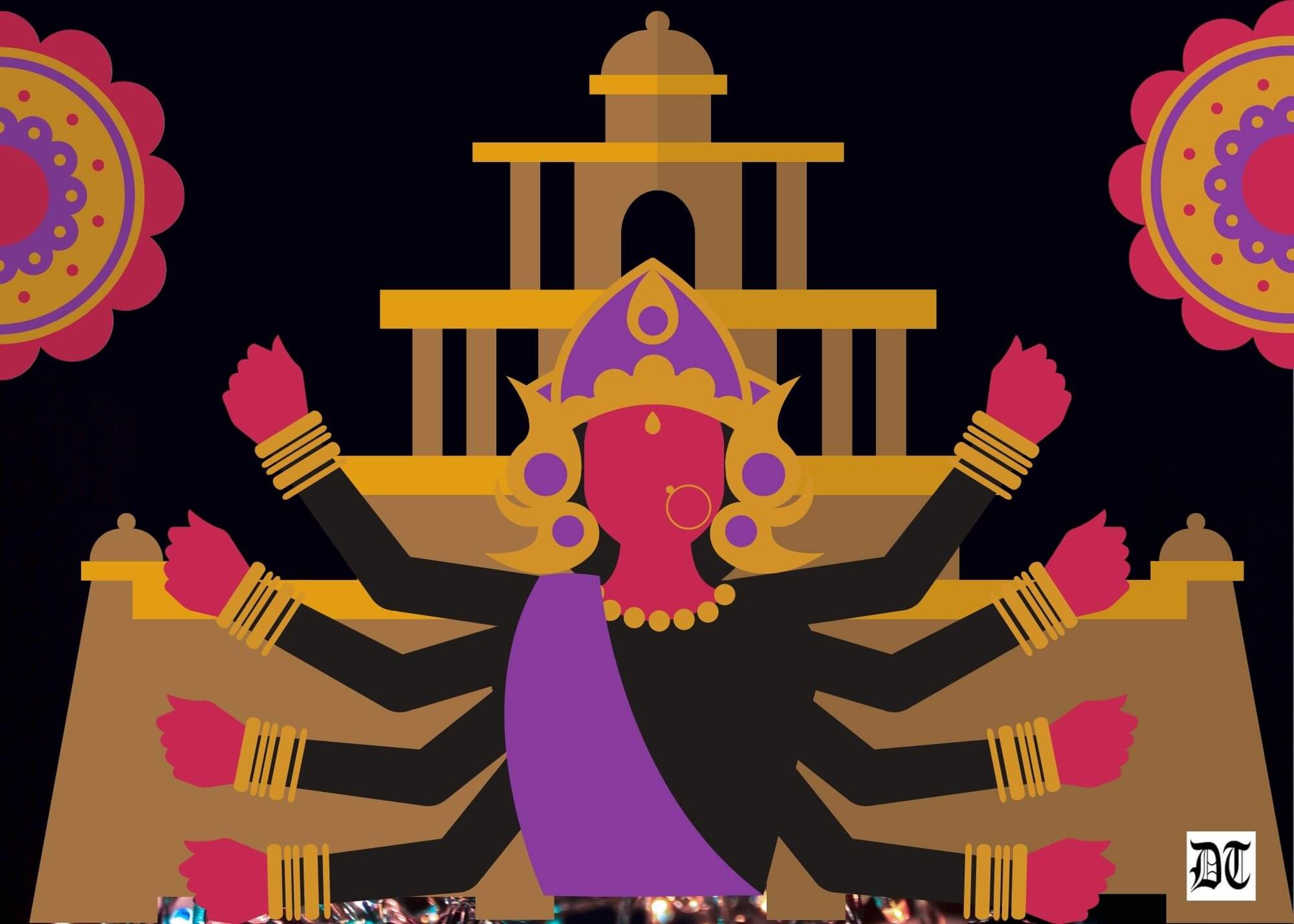Reading Time: 8 minutes
Mitali walks down the memory lane to recapitulate Durga Puja of her childhood. She unfolds mythology, history, cultural traditions, gender roles and poetry. Now, COVID-19 is the new Mahisasur, along with other evils. A Special Feature exclusively for Different Truths.
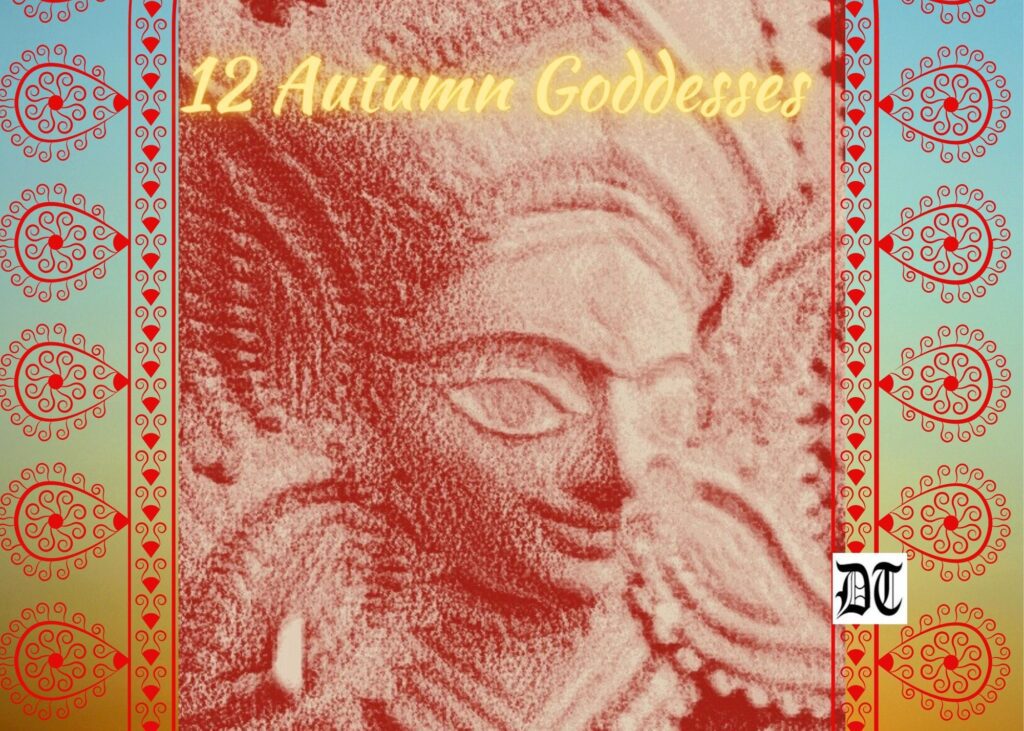
যে দিকে তাকাই সোনার আলোয়
দেখি যে ছুটির ছবি,
পূজার ফুলের বনে ওঠে ওই
পূজার দিনের রবি।
Whichever way I gaze, a golden haze
Mesmerises with dreams of holidays.
The festive floral forest invokes
A glorious gala sunrise.
That is an attempt at translating Tagore’s poem describing the puja season, which is perhaps the biggest festival for Hindu Bengalis all over the world. For us, during our childhood, it heralded a time of celebrations. There would be a cold nip in the air and whiffs of jasmine and madhabilata (Rangoon creeper), and a haze of festivities.
Durga Puja was quintessentially a time when families got together and celebrated an annual community event, met with friends and relatives, and had a whopping good time, which included new clothes for those who could afford.
Durga Puja was quintessentially a time when families got together and celebrated an annual community event, met with friends and relatives, and had a whopping good time, which included new clothes for those who could afford. Food, festivities, and fun punctuated with fasting before the offering of flowers or pushpanjali every morning. Multiple Durga puja pandals were set up all over town. We patronised one but went pandal hopping to see all the pujas.
Other than appreciating the ornate statues of the Goddess with her family in each pandal, we bought and savoured seasonal delicacies in the temporary stalls that cropped up around the community celebrations. These celebrations were open to all and sundry without any charges and I have never been able to adjust to the fact that often overseas celebrations outside of India restrict visitors by imposing monetary charges. These overseas festivities to me never quite capture what I found in my childhood. They create only a shadow, but it is never the real thing, I feel.
The reality of those days still stays seeped in my bones and spirit. Every evening, there were drummers who played this huge drum, called dhak, amidst the incense and crowds. In the evenings, people danced to dhak, in front of the goddess with incense, dhoonochi nritya. Then there were entertainment shows in the pandal.
The reality of those days still stays seeped in my bones and spirit. Every evening, there were drummers who played this huge drum, called dhak, amidst the incense and crowds. In the evenings, people danced to dhak, in front of the goddess with incense, dhoonochi nritya. Then there were entertainment shows in the pandal. Most had fun watching the evening and the late-night programmes that were to an extent performed by amateurs, our friends and neighbours. Some of the performances would be by artistes invited all the way from Bengal.
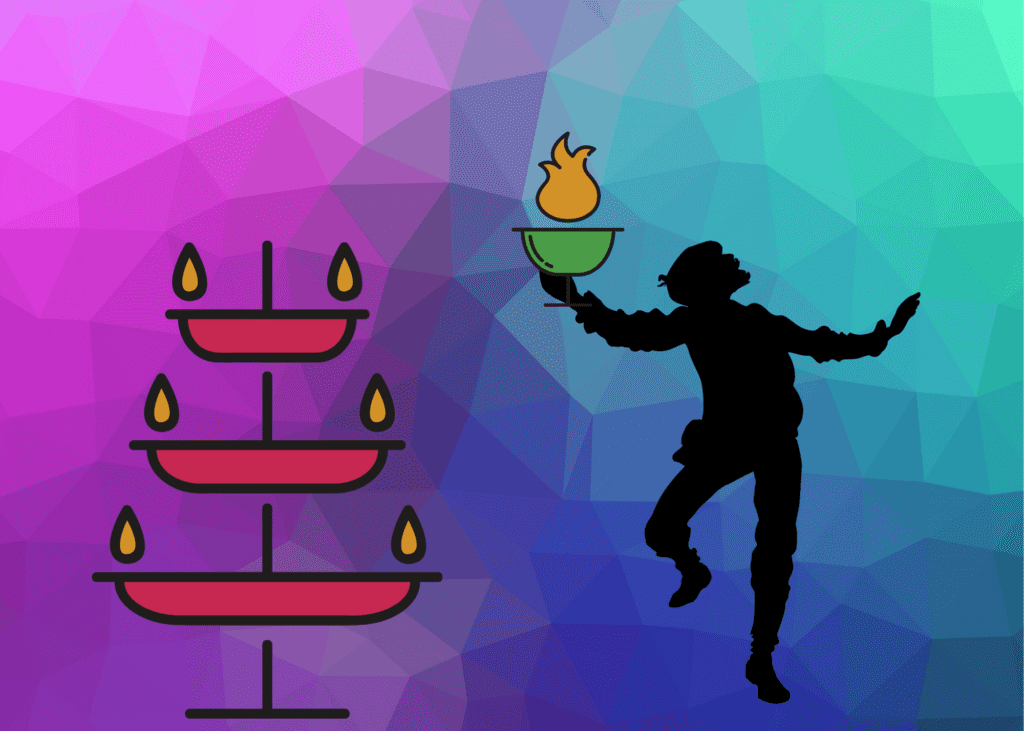
The other event that happens parallel to the puja is Dussehra. Dussehra is a north Indian celebration of Rama’s killing the evil king Ravana, who with his ten heads ruled the island of Lanka (Sri Lanka). Interestingly Rama also prayed to the Goddess Durga to help him defeat Ravana. Ram Lila, a performance of the story of Rama’s life, was performed all over town adding to the chaos of festivities. Sometimes, followers of Rama would drop in to watch our festivities and occasionally, we would trickle over to watch the fun of amateur Ram Lila productions. These performances of the life of Rama ranged from the elaborate and exclusive hosted by exclusive dance troupes, often based on Indian classical forms, to those performed by amateurs. The puja programmes, I remember, were often interrupted in Delhi with loud music from amateur Ram Lila performances within the same park. The Durga puja we attended was held in a huge community park. The two blaring microphones of Ram Lila and Durga Puja coexisted without major outbreaks of intolerance exhibited by any of the parties. When I think of it, I wonder is it still the same? I have not been to such celebrations for almost the last three decades because we moved out of India.
Durga Puja is an old — very old — tradition. No one is quite clear about the origins of the festivities other than that it started in West Bengal. Some myths link it to Rama’s invocation around this time and to the legend of Mahisasur. It probably started somewhere around the late 1500s.
Durga Puja is an old — very old — tradition. No one is quite clear about the origins of the festivities other than that it started in West Bengal. Some myths link it to Rama’s invocation around this time and to the legend of Mahisasur. It probably started somewhere around the late 1500s.
For us, the advent of the season was heralded a few weeks before the real five-day-long event, on the day of Mahalaya, when we appeased our forefathers with offerings and prayers, much like other cultures do on days like All Souls Day or the Qingming festival. Mahalaya trumpets the start of the Puja season. We children were told Durga started her descent to Earth with her family on this day. This event, in those days, meant listening to the famous rendition of Mahisasur Mardini by Birendra Krishna Bhadra, a legend unto himself. We would wake up at 4 am and sit glued to the radio — I must say I did try to get my forty winks in too but never quite managed. The music was powerful. The lyrics and the rendition still bring tears to my eyes with its majesty. It strengthens. It heals. It emboldens. To me, Durga was the all-powerful, the ultimate female force. She was given weapons by each God and Goddess, to destroy the demon Mahisasur.
Birendra Bhadra’s rendition ingrained her immensity into our systems. The festivities, which lasted five days for us, gave me an assurance that women were powerful enough to battle all evils and win without losing their femininity. For, the statue that was made was of a ten-handed Goddess who not only rode a lion to destroy Mahisasur but also nurtured her children and lived in harmony.
Birendra Bhadra’s rendition ingrained her immensity into our systems. The festivities, which lasted five days for us, gave me an assurance that women were powerful enough to battle all evils and win without losing their femininity. For, the statue that was made was of a ten-handed Goddess who not only rode a lion to destroy Mahisasur but also nurtured her children and lived in harmony. For me, this myth was so powerful and impactful that I could not then and still cannot comprehend how women see themselves as helpless. That is after more than half a century of my Earthly existence. For almost thirty years, I have not heard Birendra Bhadra’s rendition as we live in time zones different from his home. I hear snatches of it in the daytime or evening but never in the way I listened to it as a child.
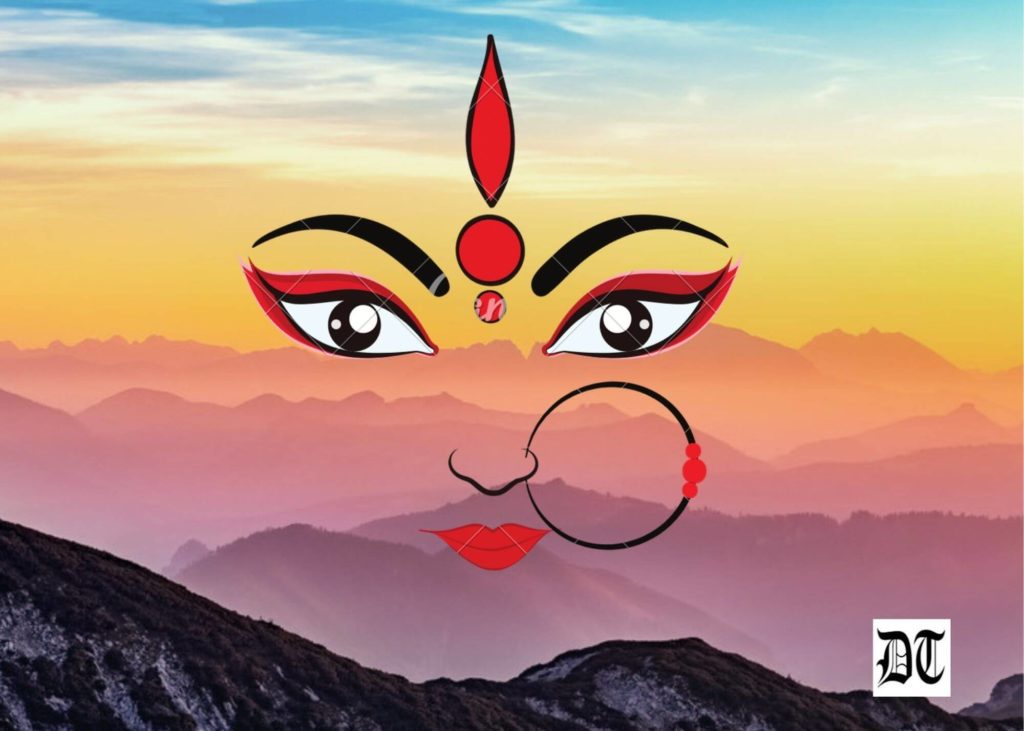
Though an English rendition of the slokas would not make sense, yet I remember, Durga was seen as an everywoman. She bore the lotus in which the creator Brahma was born and yet, she was empowered by Gods of all ages and aeons to destroy Mahisasur. The dichotomy of the sloka remains unsolved but, perhaps, it was meant to show the symbiotic cyclic relationship between all the divines, beyond gender, beyond all divisions. The Gods had all been defeated by the monster. And then, this Goddess in all her glory destroyed the evil rakshasa. There is one strand, however, that I would like to quote, an English translation I found online (with slight modifications for better comprehension) to exhibit not just this dichotomy but also to try to revive the grandeur of rendition by Bhadra.
When the whole world became a cause-and-effect at the end of the pre-existence,
Integrated the all-powerful effect of Lord Vishnu,
He was overwhelmed by the eternal bed of the sea, the yoga-sleep.
At the end of Vishnu’s yoga sleep —
From her navel-lotus awoke Bhabhi– kalpa’s creation– Vidhata Brahma.
(Mahisasurmardini, Composition – Banikumar Granthana O Shlokpath – Birendra Krishna Bhadra Sangeet Sanchalan – Pankaj Kumar Mallick)
The English translation will of course not have the impact that the original had on us as children. The brief exposure to these verses once a year, I think had a hand in making me who I am today. The fact that women and men were in the battle to survive was highlighted vividly in the verses. That a female deity could have multiple roles and be seen as the ultimate rescuer of all the Gods, made me feel fortunate to be a woman.
The English translation will of course not have the impact that the original had on us as children. The brief exposure to these verses once a year, I think had a hand in making me who I am today. The fact that women and men were in the battle to survive was highlighted vividly in the verses. That a female deity could have multiple roles and be seen as the ultimate rescuer of all the Gods, made me feel fortunate to be a woman. I could aspire to be like her in the real world — while being a mother, one could still battle negativity and change the world for the better. Why has this got lost in the lore of women exploited and helpless? Why and when did women start feeling marginalised?
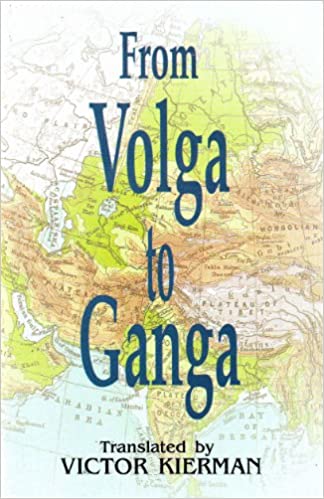
Recently, I read a book called Volga to Ganga (a translation to English from Hindi by Victor Kierman), where society was depicted as matriarchal in BC 6000. Women and men walked side by side in battle. Though this book is historical fiction, written by a traveller and thinker called Rahul Sankritayan, in 1943, in Hazaribagh jail, the lore of Durga seems to justify it. I have myself seen products of archaeological digs in Xian, China from the Banpo civilisation (around 4500- 3750 BCE) where a matriarchal culture flourished and yet, the same people, a few centuries down the line, had bound women’s feet (done away by Mao Zedong in 1911) in the same spirit as in Europe, they had corsets to narrow a woman’s waist! They were at a point regarded as chattels of men. This regression in women’s status happened all over the world. I wonder why? Can we not get back to being respectful of both men and women? Human census shows 49.6 per cent is female. To me, it makes little sense to have to keep re-enforcing that equitable rights and respect are a necessity for survival. This should be an accepted reality if we consider ourselves civilised as a race and on top of the chain of creations on Earth. Right now, we have the monster of global warming and Corona Virus threatening our very existence. Those are issues that we need to battle for racial survival.
I have myself seen products of archaeological digs in Xian, China from the Banpo civilisation (around 4500- 3750 BCE) where a matriarchal culture flourished and yet, the same people, a few centuries down the line, had bound women’s feet (done away by Mao Zedong in 1911) in the same spirit as in Europe, they had corsets to narrow a woman’s waist!
For me, Durga means strength and living in harmony with my surroundings, which include men, animals, plants, and nature. This year as climate change and COVID-19 has taken the form of Mahisasur, along with those who hide behind the facade of caste, faith and politics to indulge in violations that are less than even inhuman, what is it we can do as human beings in touch with the power within us to get over these hurdles? How can we contribute to the restoration of harmony and justice, and to the ultimate question of survival of our species?
Visuals design Anumita Roy, Different Truths and Photos from the Internet

